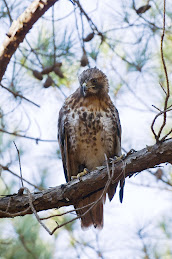
The spotted owl.
Steeped in controversy and the bane of northwest loggers. Is the continuation of this species (subspecies) more important than other similar species?
Fish and wildlife may think so.
If the spotted owl isn't able to compete, do we "thin out" its competitors? Is that right?
The ever-controversial northern spotted owl (Strix occidentalis caurina) has been protected under the Endangered Species Act since 1990, but despite the best efforts of lawmakers and conservationists the bird's population numbers continue to dwindle. Now the U.S. Fish and Wildlife Service (FWS) has a radical plan to help the raptor: kill some of the barred owls (S. varia) that are outcompeting their spotted cousins for food and habitat.Spotted owls became notorious following several decades, starting in the 1980s, of back-and-forth lawsuits as environmentalists tried to end logging in the Pacific Northwest's old-growth forests, the habitat the owls depend on for their nests and food. Logging on federal land was banned in 1991, and since then logging in Oregon alone has declined 95 percent, from 4.9 billion board feet of timber in 1988 to just 240 million board feet in 2009, according to The Oregonian. But even with less of its habitat being destroyed the spotted owl population has yet to bounce back.
Aside from its shrinking habitat, the major threat now, according to the FWS, is the growing number of barred owls in the area. These birds are more aggressive, can live in any type of forest, and eat more types of food than spotted owls, making them more adaptable to the current Pacific Northwest landscape.
According to the FWS's latest draft recovery plan for the spotted owl: "Limited experimental evidence, correlational studies and copious anecdotal information all strongly suggest barred owls compete with spotted owls for nesting sites, roosting sites and food—and possibly predate spotted owls. The threat posed by barred owls to spotted owl recovery is better understood now than when the spotted owl was listed. Because the abundance of barred owls continues to increase, the effectiveness in addressing this threat depends on action as soon as possible."
The recovery plan doesn't spell it out how it would control the barred owl population, but The Oregonian reports that "over the next year, in three or more study areas from Washington [State] to northern California, they might kill 1,200 to 1,500 barred
owls."
We have barred owls all over on the east coast. They are a handsome species - but... does their commonality make them less important?
Just something to think about. You can read more here.









